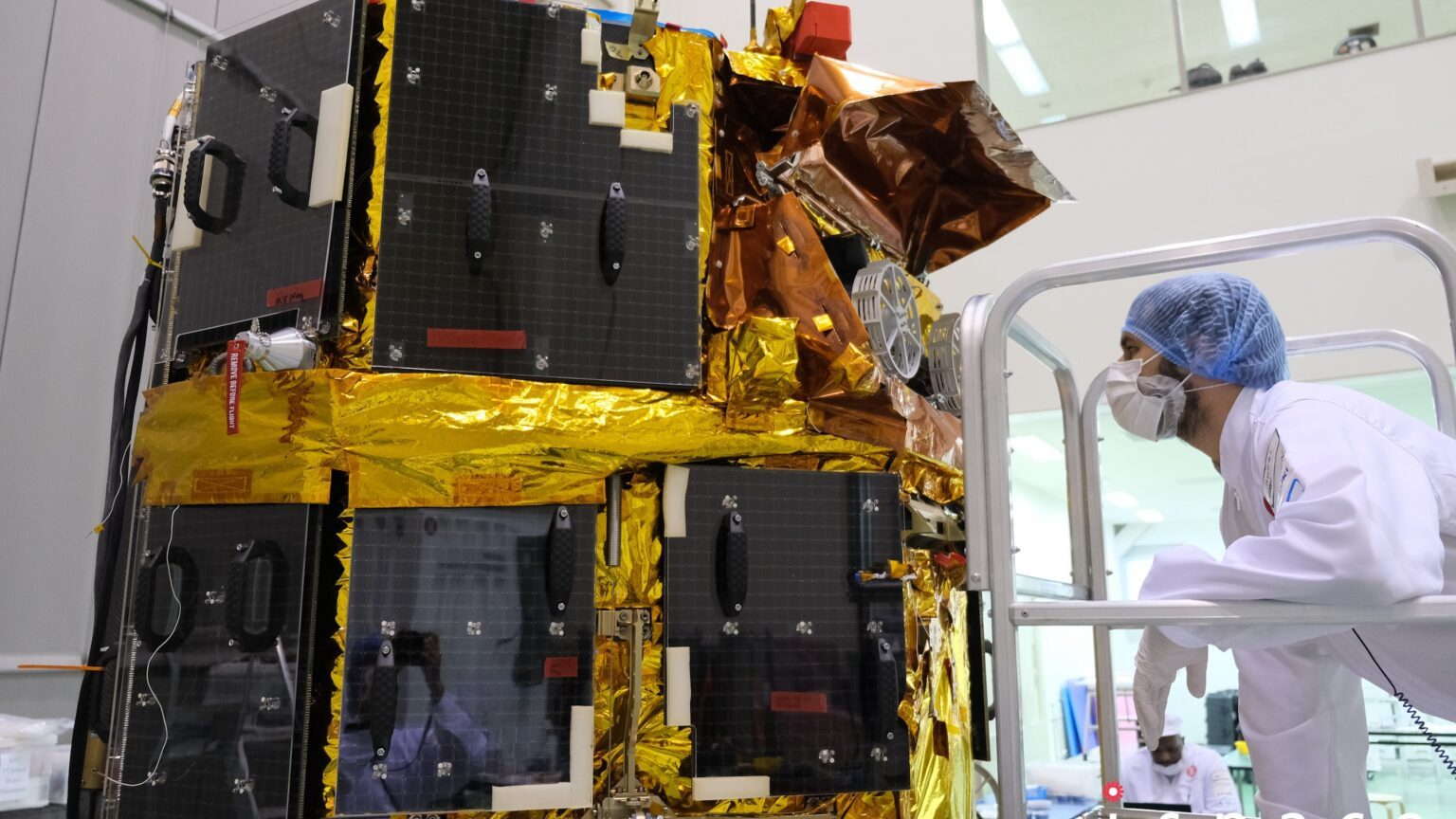
Two private moon landers will take flight on the same SpaceX rocket next month, if all goes according to plan.
The Japanese company ispace announced on Tuesday night (Dec. 17) that its second-ever moon mission will launch on the same Falcon 9 rocket that will loft Blue Ghost, a lunar lander built by Texas-based Firefly Aerospace.
That rocket will lift off from Florida's Space Coast no earlier than mid-January 2025.
"Today, we are excited to announce that, in approximately one month, ispace’s historic Mission 2 will be launching and we will make our second attempt to land on the moon," ispace Founder and CEO Takeshi Hakamada said in a statement.
"As organizations, companies, and missions around the world are aiming for the moon, ispace will continue to capitalize on our achievements during Mission 2, to lead the world in the development of the lunar economy," he added. "We hope you will join us. See you on the moon!”
Related: Japan's ispace will fly a tiny European-built lunar rover to the moon this year (photo)
The company's Mission 1 tried to put the 2,200-pound (1,000 kilograms) Hakuto-R lander down on the moon in April 2023. That attempt failed, however, after an onboard altitude sensor got confused by the rim of a crater.
Breaking space news, the latest updates on rocket launches, skywatching events and more!
Mission 2 will send a similar but upgraded lander, named Resilience, to Mare Frigoris ("Sea of Cold"), a large basaltic plain that lies 60.5 degrees north of the lunar equator.
Resilience carries five payloads — a water electrolyzer, an experimental food-production module, a deep-space radiation probe, a commemorative alloy plate and Tenacious, a 10.24-inch-tall (26 centimeters) microrover developed by ispace's Luxembourg-based subsidiary.
Resilience will take an efficient, low-energy path to the moon, then attempt a landing at Mare Frigoris four to five months after launch. If everything goes according to plan, the lander will operate on the lunar surface and deploy Tenacious, which will collect moon dirt and gravel under a contract with NASA.

Resilience is sharing its Falcon 9 rocket ride with Firefly's Blue Ghost lander, which does not yet have any flights under its belt.
This first Blue Ghost mission, which Firefly calls Ghost Riders in the Sky, will deliver 10 science instruments and technology demonstrations to the lunar surface for NASA, via the agency's Commercial Lunar Payload Services (CLPS) program.
Blue Ghost will deploy from the Falcon 9 before Resilience and reach the moon first as well, getting to lunar orbit about 45 days after launch. The lander will touch down in Mare Crisium ("Sea of Crises"), a basaltic basin about 17 degrees north of the lunar equator.
Blue Ghost will "operate payloads for a complete lunar day (about 14 Earth days)," Firefly wrote in a mission description. "Following payload operations, Blue Ghost will capture imagery of the lunar sunset and provide critical data on how lunar regolith reacts to solar influences during lunar dusk conditions. The lander will then operate for several hours into the lunar night."
Success by either Resilience or Blue Ghost would be historic. To date, just one private spacecraft has ever landed safely on the moon — Intuitive Machines' Odysseus, which pulled off the feat this past February.
Join our Space Forums to keep talking space on the latest missions, night sky and more! And if you have a news tip, correction or comment, let us know at: community@space.com.

Michael Wall is a Senior Space Writer with Space.com and joined the team in 2010. He primarily covers exoplanets, spaceflight and military space, but has been known to dabble in the space art beat. His book about the search for alien life, "Out There," was published on Nov. 13, 2018. Before becoming a science writer, Michael worked as a herpetologist and wildlife biologist. He has a Ph.D. in evolutionary biology from the University of Sydney, Australia, a bachelor's degree from the University of Arizona, and a graduate certificate in science writing from the University of California, Santa Cruz. To find out what his latest project is, you can follow Michael on Twitter.
-
Torbjorn Larsson Some interesting science payloads and a cute Swedish art project rover demo.Reply
https://www.heise.de/en/news/Private-Japanese-probe-to-bring-tiny-Swedish-house-to-the-moon-9956327.html
